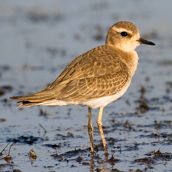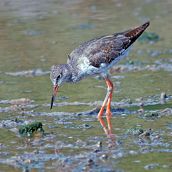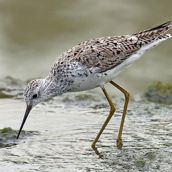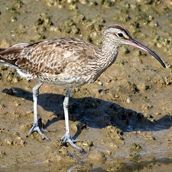Shorebirds or waders are birds that live close to the water. These include curlews, gotwits, plovers, redshanks, sandpipers and whimbrel. They usual forage in the soft sand or mud when the tide is low. With so many species feeding in the same habitat, competition for food has never been a major problem. How this comes about is the diversity of bills among the different species. The varied bill lengths and curvature determines which prey they can reach when they probe into the sand or mud for food.
Plovers like the Oriental Plover (Charadrius veredus) (above left) feed on small invertebrates by surface pecking with their short bills. The Common Redshank (Tringa totanus) (above middle) and Marsh Sandpiper (Tringa stagnatilis) (above right), with their moderate bill length, probe the top 4 cm of the substratum where there are many worms, bivalves and crustaceans. On the other hand, the long-billed curlews and gotwits, with their longer bills, can catch prey that live deeper in the substratum. These include the Eastern Curlew (Numenius madagascariensis) (below left), Bar-tailed Gotwit (Limosa lapponica) (below middle) and Whimbrel (Numenius phaeopus) (below right).
As each group of species feed at different depths, there is limited competition for food along the shore.
Dr Eric Tan & YC Wee
Singapore
March 2009
(All images by Dr Eric Tan)
This post is a cooperative effort between NaturePixels.org and BESG to bring the study of bird behaviour through photography to a wider audience.















3 Responses
Great Write-up!